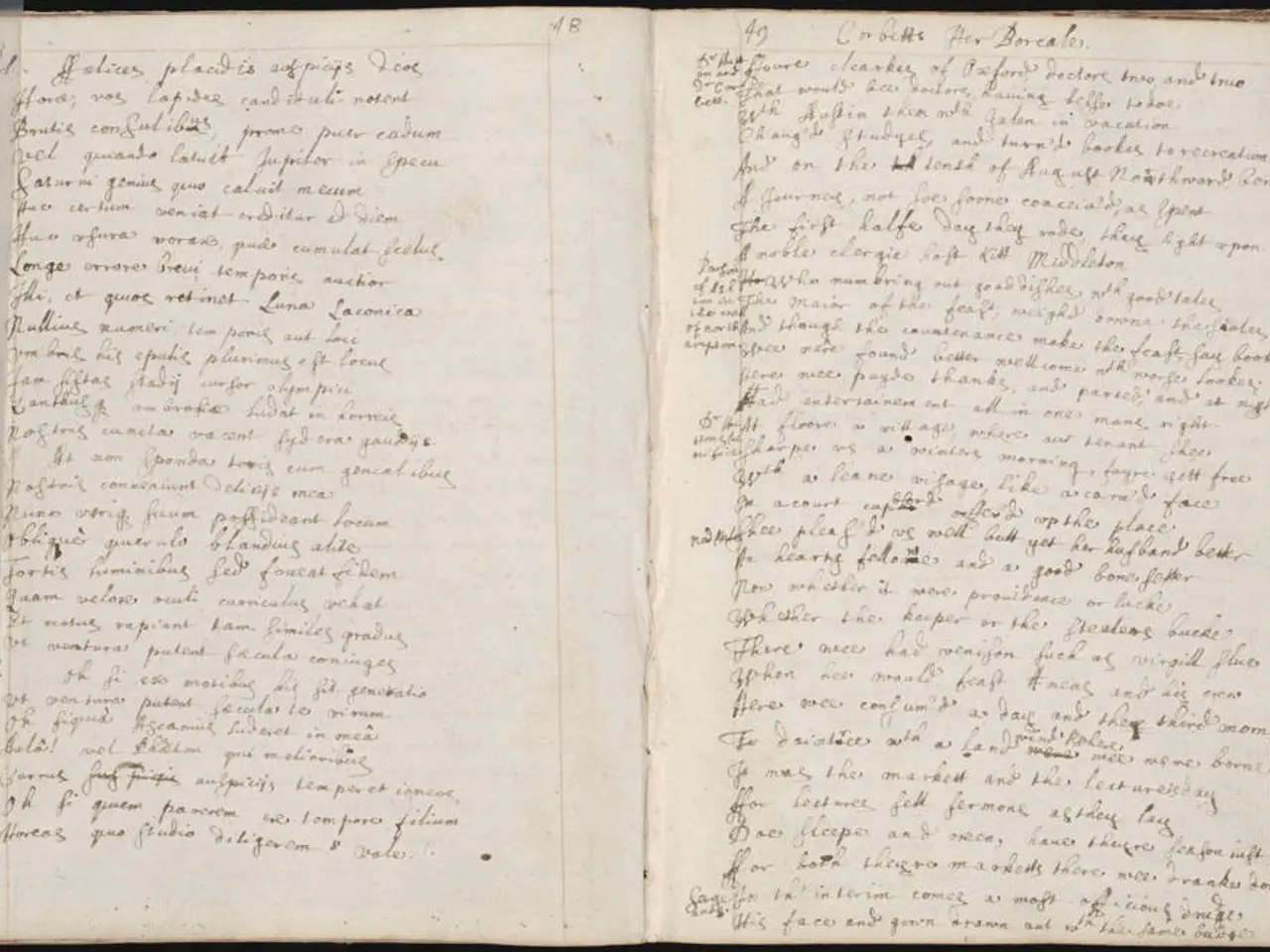Guide to Poetic Craftsmanship: A Comprehensive Poetics Resource
In the realm of poetry, the fifth edition of *The Book of Forms: A Handbook of Poetics* by Lewis Turco serves as a comprehensive guide for both traditional and contemporary poetic forms and techniques. This revised edition expands upon previous versions, offering a wide range of classical and modern forms, along with detailed technical explanations and examples.
The book is divided into several sections, each focusing on specific poetic forms and techniques. Among the fixed forms covered are the Sonnet (Petrarchan, Shakespearean, Spenserian), Villanelle, Sestina, Pantoum, Ghazal, Haiku, Tanka, Limerick, Ballade, Rondeau, Triolet, Epigram, Cinquain, Acrostic, and Clerihew.
Classical and Medieval forms such as the Ode (Pindaric, Horatian), Elegy, Epic, Mock Epic, Madrigal, Rhyme Royal, Blank Verse, Couplet (heroic, closed/open), Ballad, Dramatic Monologue, Prose Poetry, and Narrative and Dramatic forms are also discussed in detail.
For those who prefer experimental and contemporary forms, the book includes Free Verse, Concrete Poetry (Visual Poetry), and Found Poetry.
The book also delves into various poetic techniques and devices, such as Meter and Rhythm (iambic, trochaic, anapestic, dactylic, spondaic, pyrrhic feet), Scansion methods and patterns, Rhyme schemes (perfect, slant, internal, eye rhyme), Alliteration, Assonance, Consonance, Enjambment and caesura, Repetition, Anaphora, Epistrophe, Sound devices (onomatopoeia, consonance, assonance), Syntax variations and inversions (hyperbaton), Figures of speech (metaphor, simile, personification, synecdoche, metonymy), and more.
Structural and formal elements, including Stanza forms, Line lengths and variations, Use of refrain, Persona and voice in poetry, are also covered in depth.
In summary, the fifth edition of *The Book of Forms* offers a thorough cataloguing of over 200 poetic forms and techniques, blending historical forms with modern innovations. It serves as both a reference and a practical guide for poets to explore the vast formal possibilities in poetry.
The book is available for purchase from online booksellers in both paperback and eBook formats. The updated typography, subheads, and improved examples in the new edition make it an invaluable resource for poets and lyricists. Despite the availability of the eBook format, the paperback edition is still considered the best way to experience *The Book of Forms* due to its ease of random inspiration flipping.
Lewis Turco, the author, has been using *The Book of Forms* since 2004 and considers it instrumental in his development as a lyricist. He expresses a desire for a hardbound format for future editions. The "The Elements of Poetry" section benefits from the updated typography and subheads in the new edition, making it even more accessible for readers.
Whether you're a seasoned poet or a beginner, *The Book of Forms: A Handbook of Poetics* is an essential addition to your literary toolkit.
This comprehensive guide, The Book of Forms: A Handbook of Poetics, extends beyond the realm of poetry to offer insights on home-and-garden themes, as well as lifestyle, books, and entertainment matters. It's a favorite among poets, not just for its extensive coverage of various poetic forms, but also for its delving into literary devices, structural elements, and even contemporary forms like Free Verse, Concrete Poetry, and Found Poetry.




